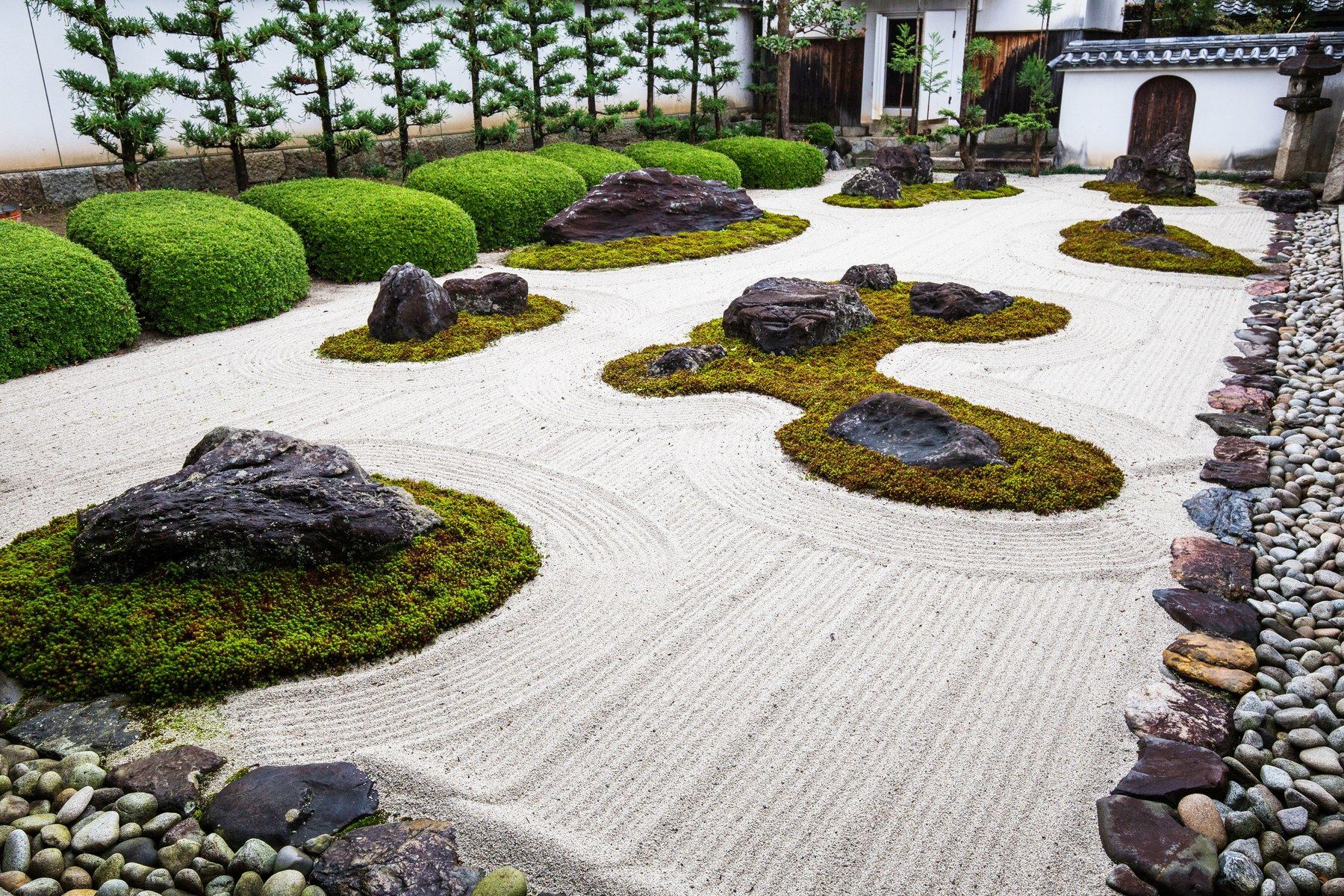
An interesting decorative element, like a rock garden, is a part of Buddhist art. This is not found in any other culture. Unusual for Europeans, philosophical gardens are endowed with grace and attractive simplicity. Stone composition is an excellent option for decorating a summer cottage. Modern designers offer many ways to implement such an idea. In the homeland of stunning décor, in Japan, only artisans can install it. In our regions, everyone can install an unusual decoration in the country with their own hands.
History of Stone Gardens
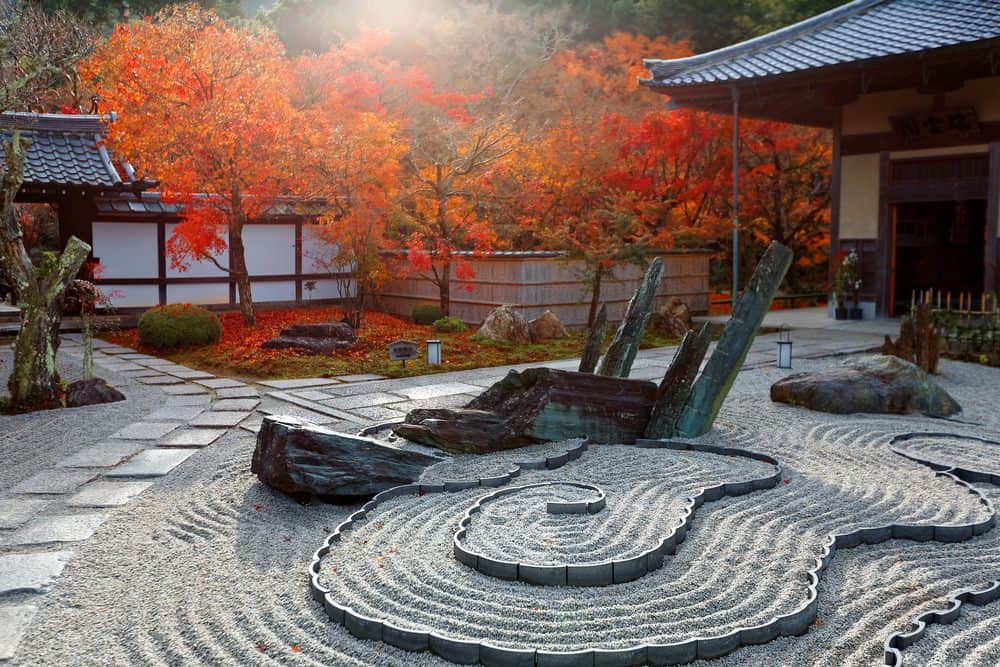
In the Japanese garden, cobblestones of various sizes and shapes symbolize mountains. They first used them in the 14th century. Monk and master of garden decoration Muso Soseki became the progenitor of unique compositions. Scattered stones on the ground in a certain order symbolize resistance to adversity, long life since they remain unchanged for centuries. Previously, they were created only at temples and monasteries, and their main purpose was only to provide aesthetic pleasure.
According to legend, one sailor saved a turtle from death. And she, as a token of gratitude, showed him one of the five islands where the immortals lived. Since then, people began to decorate their plots with rocky decor according to certain rules. The elements themselves must be strictly odd, and their number can only be a multiple of three or five.
Garden Style and Purpose
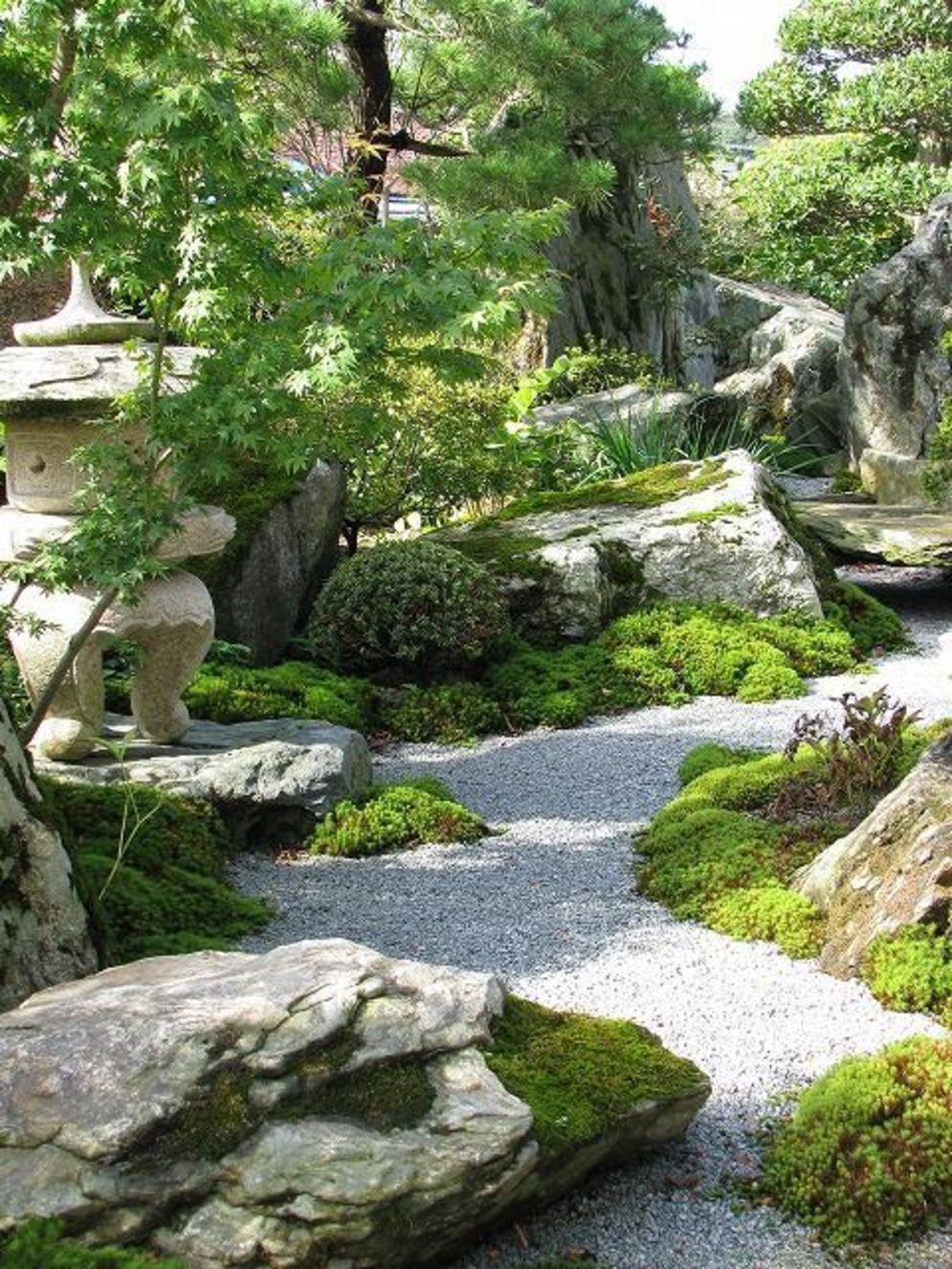
At first glance, it may seem that the boulders and various minerals in the street composition are arranged randomly. In fact, the place for installing the elements is chosen according to certain rules. First of all, they indicate the main point of contemplation. It is on her that it will guide the garden. The hours of probable observation are considered not to spoil the pleasure of contemplation with the scorching sun and excessive shadow.
Japanese rock gardens are always asymmetrical, filled with elements of different sizes and shapes. The decor is never placed in parallel. All objects should be clearly visible from any viewing angle and create a heptagonal geometric network of lines. If there is a reservoir on the site, you should consider the reflection of stones in the water.
The main task of the rock garden is to help you tune in and relax. If you observe the entire composition, you can see the enchanting islands with waves departing from them in a certain direction.
Basic Rules for DIY Creation
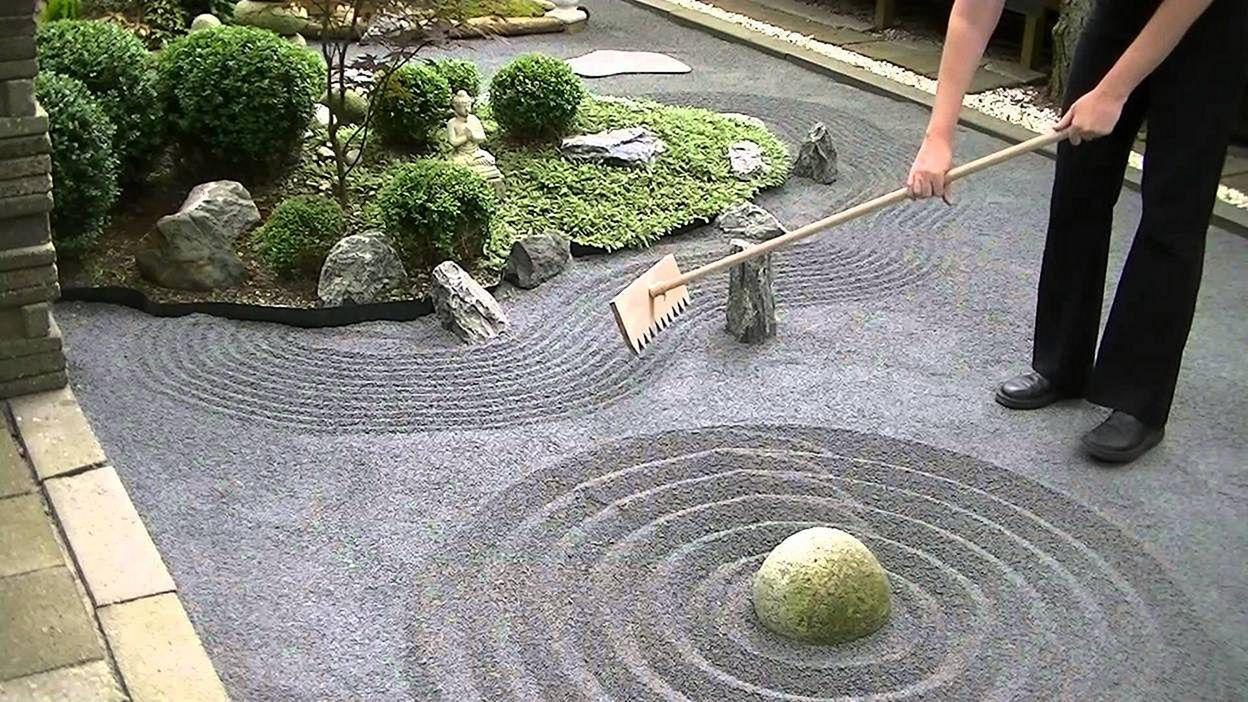
For many, a rock garden creates a feeling of emptiness. But in fact, the achievement of the effect of infinity occurs according to certain rules. When creating such a landscape design yourself, you need to choose only stable cobblestones and miniature pebbles. They shouldn’t just look scattered. To do this, you must initially think over the idea of \ u200b \ u200bthe drawing. Then, compare with a ready-made photo or picture. Finally, the depth of digging is chosen depending on the shape of the stones and the terrain features.
Feng Shui Rules
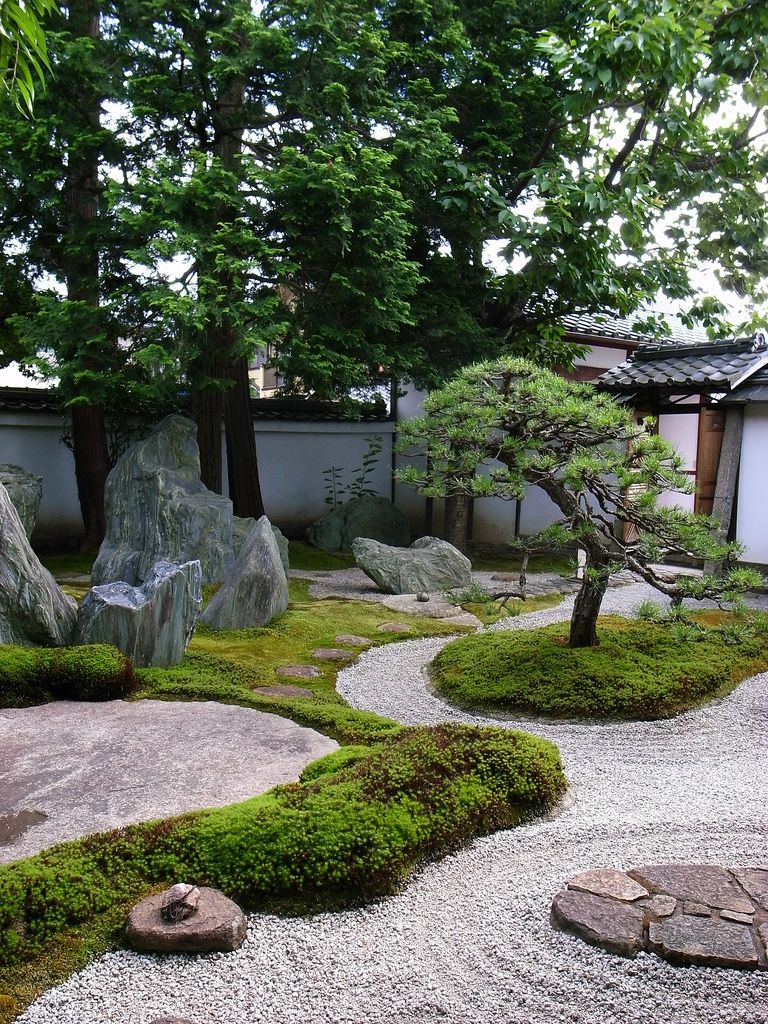
A Feng Shui rock garden is created for relaxation and rejuvenation. All elements there are considered sources of life and symbolize the earth. Therefore, they should be located as naturally as possible. An essential part of the decor is any water element in the form of a stream or lake. The stones located near the reservoir will complement each other’s energy.
The main way to organize a garden in Feng Shui is to designate functional areas along the Bagua grid. For example, running water is placed in the grid of a career, a playground – in the child’s area, a gazebo, benches, benches are installed in a place of friendship and partnership. Flat stones, paths with smooth outlines, and curves in a feng shui garden are not allowed.
Only real raw objects are suitable as filling elements since only pristine materials will help to appreciate the natural beauty. Therefore, any imitations and other garden decor are excluded.
Preparation: Site Selection and Site Arrangement
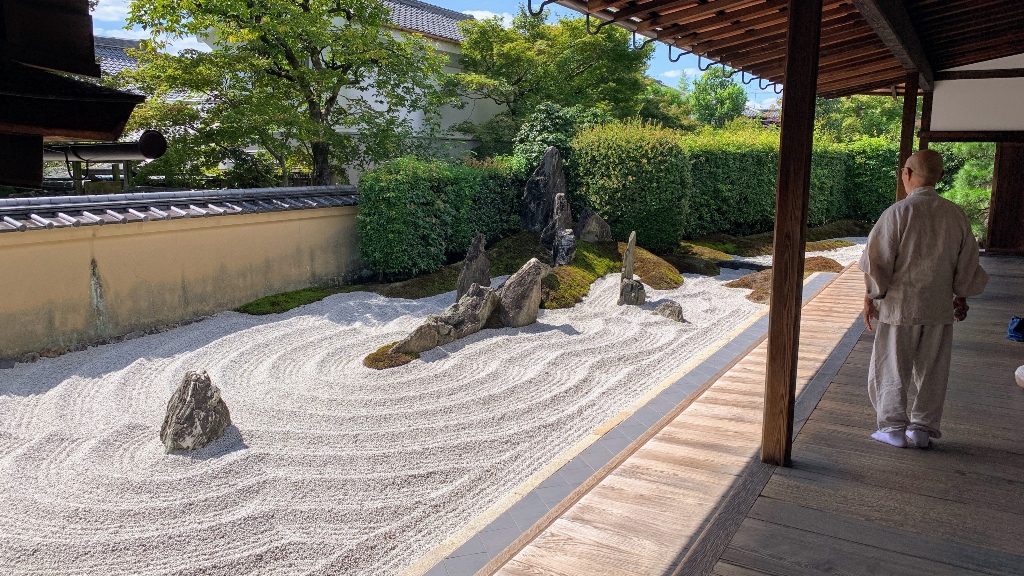
Any rockery, regardless of size, should be located as naturally as possible, in harmony with the site’s relief and other decorative elements. Irregularities will be the perfect platform for composition placement. It can turn even the most inconspicuous hollow or hill into an original design element. If the site is absolutely flat, the drops are created artificially in various ways.
When choosing a place, one should consider the peculiarity of the materials and the purpose of the composition. For example, none of the elements of a rock garden should be located in a corner or near a fence. It will look dull and tasteless, resembling just a dumped heap of waste after construction. If such placement is necessary, the site must be well decorated. It can be climbing plants, beautiful flowers, shrubs in the theme of the stone layout.
Required Materials and Tools
To create a Japanese rock garden, you do not need to purchase new materials or order design elements of a certain shape. It can find all the details of the decorative composition in your yard. However, when planning on your own, it is important to follow strictly step-by-step instructions to get a beautiful and positively affecting composition. It can create the original landscape from the following materials and tools:
- Small stones, bricks, pebbles
- Wooden boards for fencing
- Geofabric
- Boulders, parts of rocks
- Gravel, sand
- Base leveling equipment (wooden, metal rake)
Selection of Basic Elements
The choice of stones, as well as all additional elements, must be approached thoroughly. It is necessary to pick them up right away in the right amount so that they do not differ in color and structure, and they are ideally combined in a single composition. Moreover, they should be from the same locality since each element has its own personality.
First of all, you need to study each stone well, choose the most successful structure, group several pieces of similar subjects in one specific place. Then it would help if you determined the side to which it will be turned towards the light and make a stable base.
Rules for Composing Compositions and Placing stones
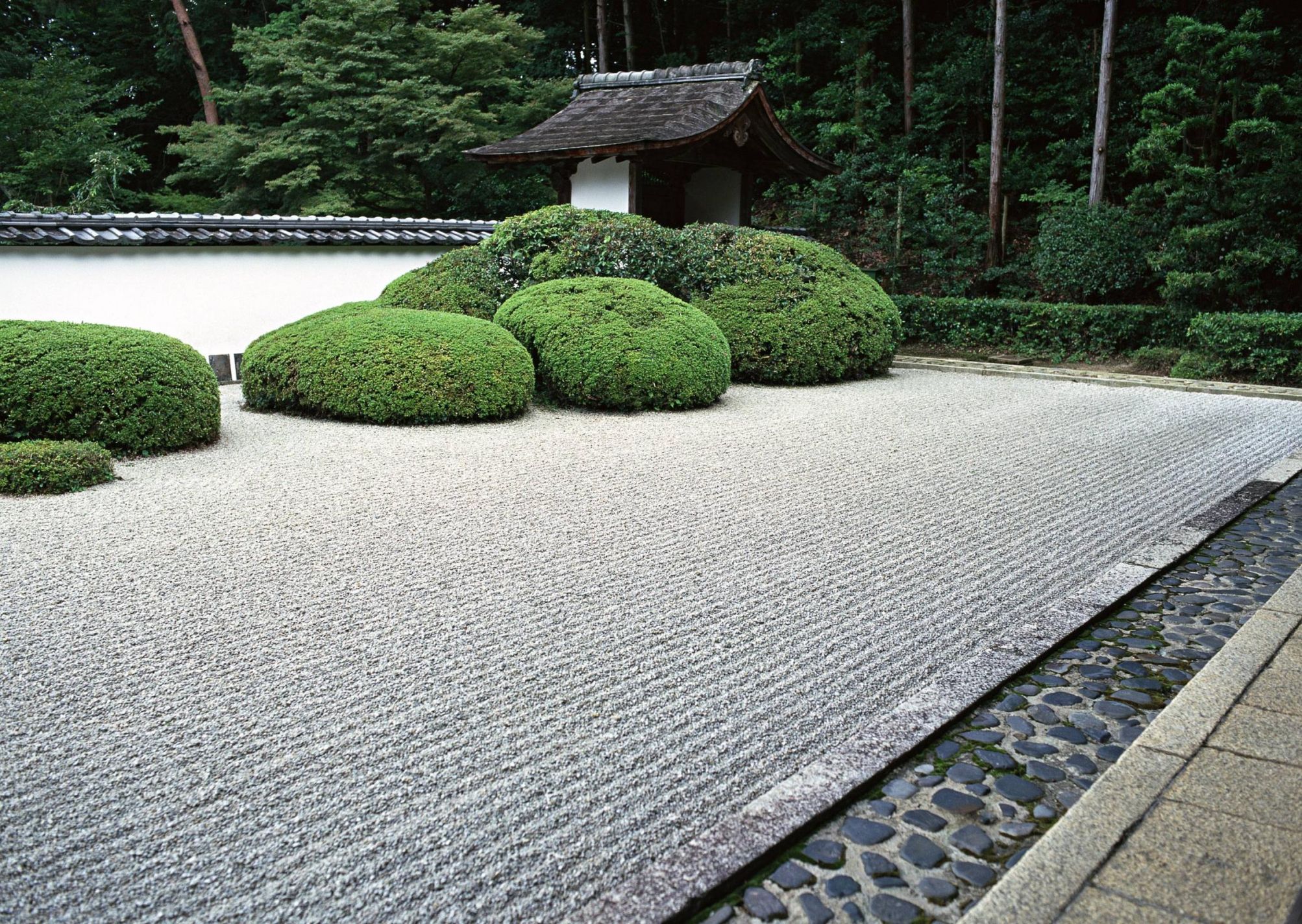
The arrangement of stones on the site must be carried out according to certain rules. The SUteiShi technique guides professional rockeries makers. It can use only an odd number of details to create a composition. They shouldn’t just lie on the surface. It is necessary to create the effect of their living growth from the soil, deepening sufficiently.
To create a composition of several elements, stones of different sizes are used. All items are selected in the correct proportion. To balance the yin-yang energy, there must be more horizontal stones than vertical ones. Horizontal rocky décor smooths out the influence of vertical objects such as trees, fences, brick buildings.
The site for creating a rock garden is completely covered with sand or gravel. A heptagonal geometric network is used to determine the exact distance. The elements are positioned exactly at the intersection of the network. In small areas, only part of it is used.
Additional Garden Elements
Japanese compositions are filled not only with bare stones. Correct drawings in the sand, precisely located paths, fences, fountains, and waterfalls play an important role. The patterns are made with a special rake after carefully considering the theme of the picture. Lines, circles should be even, symmetrical, in harmony with the surrounding landscape.
Opaque materials are used for fencing. It is installed on one or both sides of the garden and is given the task of creating an atmosphere of privacy. More often, they use a low wall made of stone, concrete, bamboo. Tsukubai will help to bring an element of dynamics to the composition. Water flows into small stone barrels through pipes, which brings movement without disturbing the tranquility of the rock garden.
Lanterns will help to illuminate the stone composition in the evening and at night. They are made only from natural materials (wood, stone, pumice). Subdued light, an atmosphere of mystery, allows you to look at familiar things in a new way.
Choosing Plants for a Stone Garden
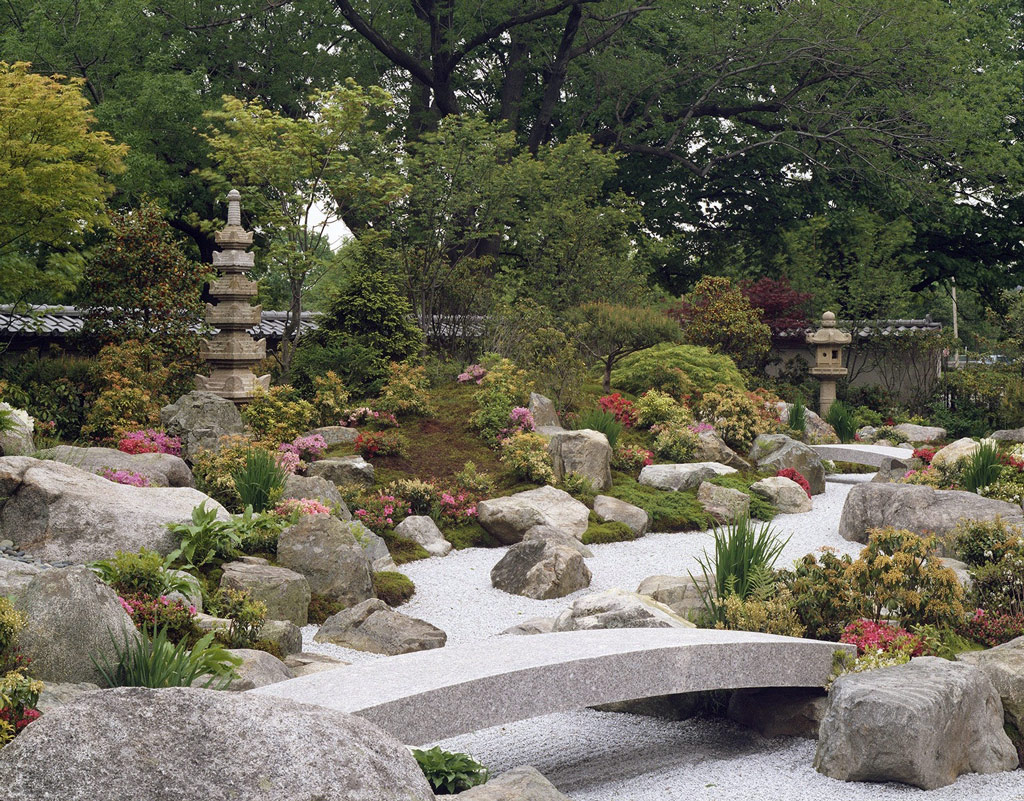
The created landscape, first of all, should imitate mountainous terrain but look as natural as possible. All plants must match each other in color, shape, and size. Also, flowers should have the same soil requirements and be picky about the neighborhood on a rocky area. At the planning stage, before planting, it should take all agricultural conditions into account. The choice of vegetation for a rocky garden is carried out according to the following rules:
- It is better to plant several types of flowers. Then, in large groups, they will look more harmonious.
- It should follow color rules. It is necessary to smoothly soften the transition from one group to another with a neutral color.
- Symmetrical planting in a rocky garden is not used. Randomly located groups will look better.
- For rockeries, plants with the longest flowering are suitable.
Caring for Rock Garden
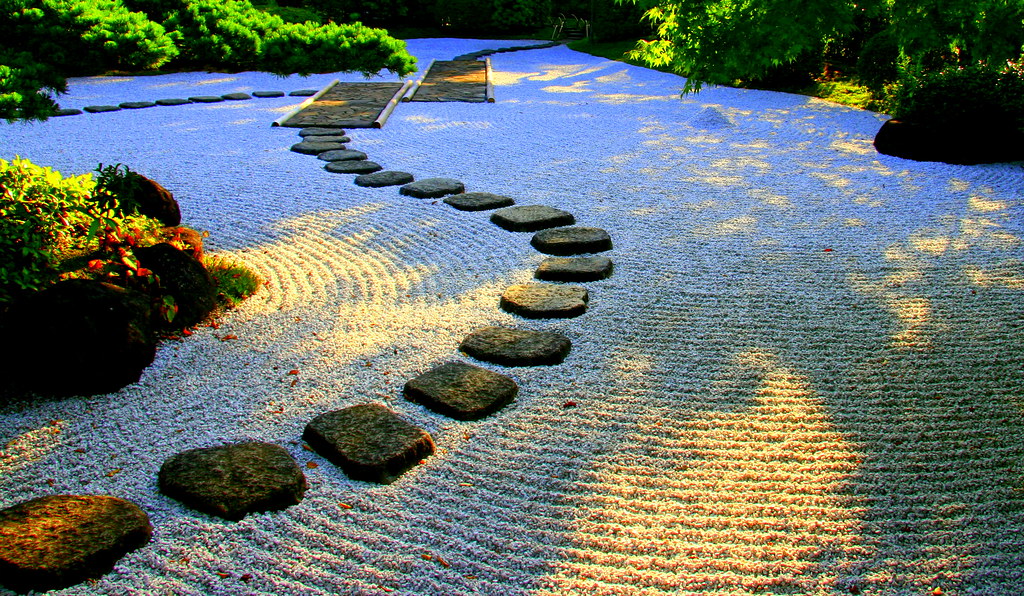
The rocky garden does not need much maintenance. It is enough to maintain its appearance by adhering to some recommendations. Fast-growing weeds are the biggest problem, so you should get rid of all deep-growing roots during the preparation phase. Then the land is treated with herbicides, and geotextiles are laid. After a while, unwanted vegetation may reappear. To not spoil the appearance of the garden, you should remove it promptly.
Debris and fallen leaves can spoil the appearance of rocky compositions. To carry out cleaning without hindrance, you should consider access to any part of the rockery, even at the planning stage. It is better to remove dirt with a wire rake. If plants are planted on the site, it is necessary to think over the irrigation system and the possibility of periodic fertilization. To freshen up the appearance of the stone garden, you must renew the base at least once every three years.
Famous Rock Gardens
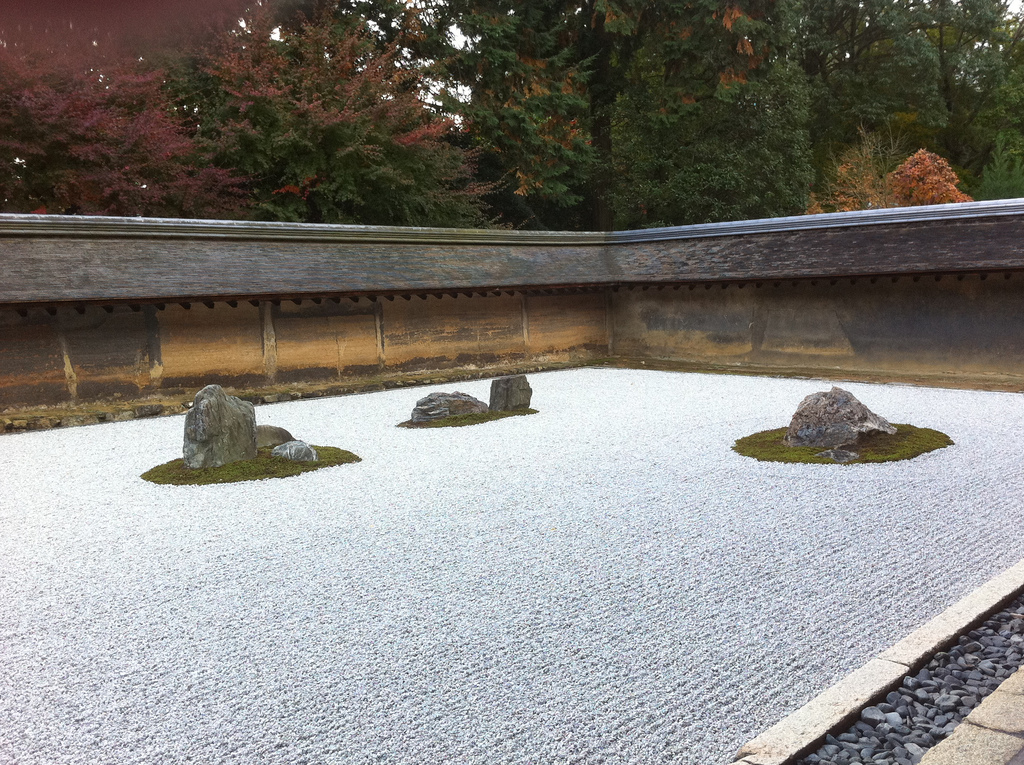
One of the most famous rock gardens is the large composition in Kyoto. It consists of 15 stones on white gravel, decorated with green moss. The uniqueness of the composition lies in the amazing visual effect. Whichever side you look at it, it will always hide one element from view. According to legend, only an enlightened and spiritually purified person can fully see the garden.
An equally famous rocky garden is located in Vietnam in the city of Nha Trang. On the picturesque cape, there are natural stones of various amusing shapes. It is the level of polish and natural originality that attracts many tourists to this garden. The dendrological park in the Krasnodar Territory can boast of a similar masterpiece of park art.
Conclusion
Everyone can independently introduce a new direction of landscape design on their home site. Depending on the size of the territory, you can organize a large park or a miniature composition near the house. In addition to stones of an interesting shape, any available materials are often used, for example, baskets, old troughs, a table.






